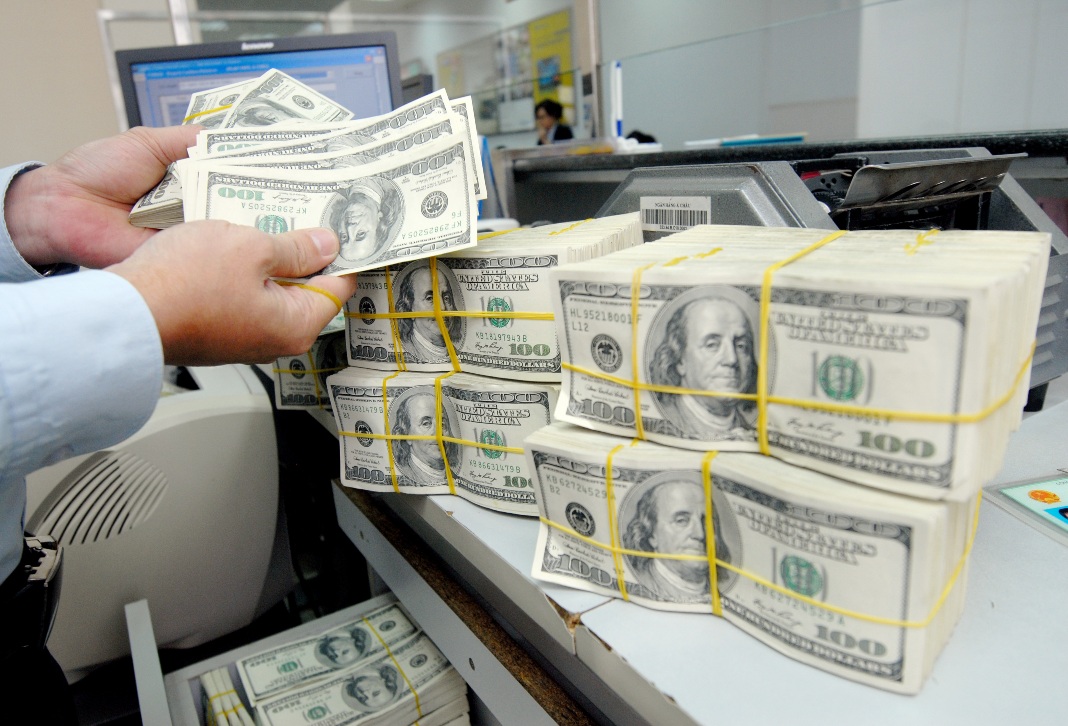Interest rates rose sharply in the fourth quarter of 2022, leading the State Bank of Vietnam to intervene with aggressive measures. They edged down in the final days of last year. The interest rate trajectory in 2023 remains unpredictable, though.
An upward spiral?
The State Bank of Vietnam (SBV), the nation’s central bank, recently sent Document 9064/NHNN-TD to local commercial banks and foreign bank branches, calling for their full compliance with its interest rate policy. While asking banks to lower their operating costs and streamline administrative procedures to make lending rate cuts possible, as well as reduce exposure to credit risks from investments in corporate bonds and real estate, the central bank emphasizes that it would sanction banks that revise up interest rates.
Earlier, SBV Deputy Governor Dao Minh Tu said the SBV had directed banks to lower their savings and loan rates depending on their scale and capability to back the struggling business community. In addition, on December 12, 2022, banks were required to send weekly reports to the SBV on savings and lending rates on new transactions during the given week.
Thanks to those drastic measures, plus the central bank’s pledge to provide liquidity support for banks via open market operations or foreign exchange swaps, multiple banks adjusted down savings rates in the last days of 2022, resulting in lower lending rates. Interest rates are still an unpredictable variable in 2023, with the possible return of an upward trajectory, especially at a time when the economy is facing hardships and challenges.
HSBC, in a recent report, revised up its 2023 inflation forecast for Vietnam from 3.7% to 4%. This means the central bank might keep monetary tightening in place. HSBC said the central bank might increase the refinancing rate by 50 basis points in the first or second quarter of this year, taking it to 7% in mid-2023 versus 6% in late 2022.
Meanwhile, VNDirect Securities Corporation predicted that interest and foreign exchange rates could remain under pressure until the second quarter of 2023, before they start to ease. The U.S. Federal Reserve (Fed) has suggested it is at neutral on monetary policy. Though it is believed that the SBV will keep interest rates unchanged in 2023, HSBC forecast that savings rates could go up by 50 basis points this year, way below the increase of 200 basis points in 2022.
Where does pressure come from?
While discussing the two interest rate hikes, SBV Deputy Governor Pham Thanh Ha said in early December 2022 that interest rate adjustments were made on certain grounds. First, central banks worldwide tightened their monetary policies by raising interest rates strongly to cope with runaway inflation. Second, inflation at home was put under control, but for monetary policy, core inflation was an important factor as it was trending up. Third, the strong rise of the U.S. dollar sent the currencies of most economies in the world tumbling. To prevent the dong from sharply depreciating, causing macroeconomic instability, the SBV had no other choice but to hike interest rates to stabilize the local currency and keep the exchange rate stable. Fourth, right from the beginning of 2022, banks stepped up lending to fuel the recovery of the Covid-hit economy. Rapid credit growth but slow capital mobilization caused liquidity problems for the banking system.

Therefore, the interest rate hikes were meant to help banks attract more cash. Ha said the SBV would continue to closely monitor developments in the domestic and international money markets, and adjust rates in line with the macroeconomic balance, inflation and monetary policy objectives.
Thus, the above reasons allow us to see the pressure on the monetary policy and the trajectory of interest rates this year.
Inflation has already shown signs of easing in certain economies, resulting in major central banks, especially the Fed, announcing they would slow down the pace of interest rate hikes in 2023. It is apparent that the pressure on the monetary policy of Vietnam has somewhat eased. It is expected that the Fed’s interest rates would peak at 4.9-5.1% in mid-2023 versus the current 4.5%. Therefore, the U.S. central bank could possibly add another 0.4-0.6 percentage point in the first half of this year.
This is probably the basis for the forecast of most institutions that interest rates will likely pick up 0.5 percentage point this year.
With the slower pace of interest rate adjustments by the Fed, the prospect of the U.S. dollar is no longer as good as before, so its impact on the exchange rate in Vietnam will gradually lessen.
Perhaps, inflation is the only factor that will affect interest rates in 2023. Although the country successfully put inflation under control last year, it may see inflationary pressure at home starting to build up this year. In fact, the National Assembly has recently assigned the Government to curb inflation at 4.5% in 2023, which is 0.5 percentage point higher than in previous years.
Based on negative factors such as supply chain disruptions, undersupplies, a sudden surge in aggregate demand, a labor shortfall and an expected increase in regional minimum wages, rising fuel prices induced by growing production and consumption demand in the coming time, the Vietnam Confederation of Commerce and Industry has recently predicted that Vietnam’s inflation would be around 4.5% in 2023.
Meanwhile, economic experts expect that inflation in Vietnam may exceed 4.5% this year as China begins to reopen its economy following its strict Covid-19 lockdowns, which will exert pressure on global prices. Therefore, to cope with mounting inflationary pressure, the Ministry of Finance is looking to extend the environmental protection tax cuts on certain fuels until the end of 2023, in the context that global oil prices fall this year.
On the contrary, the prices of other energy sources will probably shoot up in 2023. Vietnam Electricity Group (EVN) has recently proposed raising power prices this year, which will be its first major adjustment in nearly four years, citing a surge in the cost of importing energy as the reason. Reportedly, according to its calculations based on how fuel prices swing during the early months of year and on the approved power system operation plan, the State-run utility may incur a loss of nearly VND65 trillion in its 2022 production and business results.
There are opinions that interest rates are high in Vietnam at the moment. Thus, if interest rates further go up to adapt to inflation, there will be no need for drastic adjustments.
Concerning liquidity pressure as a result of the high ratio of loans to savings, like in 2022, the problem is expected to take a U-turn this year. With soaring interest rates at present, money will certainly flow into bank savings accounts while corporate clients will have little appetite to take out loans. Besides, the central bank is likely to maintain its stringent control over lending this year to keep a balance in liquidity for the whole system, to ensure macroeconomic stability and restrict uncertainties.
The corporate bond market is in crisis and worse still, access to bank loans is tougher than ever. The burden of debt is heavier for businesses, so the possibility of debt default this year and beyond is high. This will force banks to increase interest rates to make capital mobilization easier and cope with non-performing loans they are stuck with.
With some provisions of Decree 65/2022/ND-CP recently proposed to be amended or delayed until 2024, the corporate bond market is expected to temporarily get out of troubled waters. For this reason, the impact on the operations of banks, the real estate market and interest rates will not be so great.









